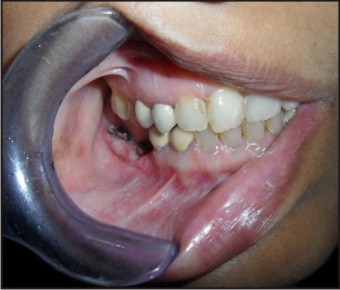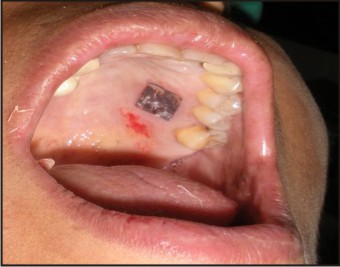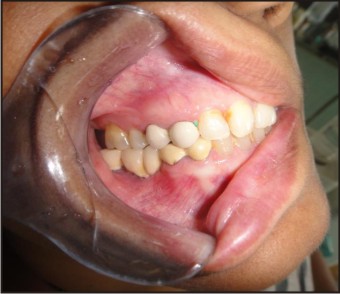Introduction:
Gone are the days when vanity was for the riches. Now everything and anything is available for everyone, Implant is no more a exception. It is no more a distant star, it has arrived at the common man’s door step. Doctors strive for conservation. What we want is maximum result with minimum damage and here the need for revolution comes, a new technology in a new era that is IMPLANTS!!!
The successful use of dental implants to replace missing teeth has been one of the most popular, exciting and evolving areas of clinical dentistry[1]. When implants are thought as a treatment option, treatment planning has become more complex for the dental practitioner and an interdisciplinary team approach is recommended[2]. Failure to demonstrate such an approach may lead to an undesirable implant complication.
Successful implant therapy can no longer be judged by whether or not the implant simply osseointegrates. Even precise ceramic duplication of the shade, contour and translucency of natural dentition may still result in an esthetic failure if the gingival profile, colour and texture are inadequate. Therefore functional and esthetic success of implant treatment depend not only on the quality of the restoration but also on the final aspect of the contour and stability of the marginal gingiva and the proximal papilla in harmony with the adjacent teeth[3].
Soft tissue grafting can be one of the treatment of choices for thickening implant tissues at implant placement, to treat gingival recession and augment the keratinized gingiva [4]. Autogenous and allografting material have been used to augment the gingival dimensions [5],[6],[7],[8].
A connective tissue graft, a thick biotype with large amount of attached keratinized gingiva is treatment of choice in many cases for treating gingival recession or for thickening periimplant tissues around implant. The aim of this case report was to present a clinical case with connective tissue grafting procedure around implant to augment the gingival tissue.
Case Report
A Healthy 52 years old woman with chief complaint of replacing her missing teeth attended to the Department of Periodontics & Implantology in VSPM’s Dental College & Research Centre, Nagpur. On examination mandibular right first & second molar teeth was missing because of caries 6 yrs back. She presented with excellent oral hygiene, no history of periodontal disease, non-smoker and radiographic X-ray revealed normal bone morphology. So according to situation and patient willingness we had planned for implants in the area of missing teeth. For that she was anesthetized using 2 % lidocaine with 1: 100,000 epinephrine followed by a full thickness flap reflection, then Addin implants were inserted in the area of mandibular right first & second molar teeth. Then flap was sutured using 3-0 mersilk suture and after 8 days patient came for suture removal. Healing was uneventful.
After 3 month, when she came for further treatment we noticed gingival recession on buccal side of mandibular right first molar implant (Fig1). Osseointegration was proper at this time. Taking in consideration future recession around that implant, we recommended connective tissue graft to augment the keratinized gingiva and improve esthetics. For this a partial thickness flap was reflected form the palatal area of maxillary left first & second premolar and molar teeth. A palatal trap door flap design was used to obtain the desired subepithelial connective tissue donor graft (Fig 2). The harvested CT graft was placed over the dental implant (Fig 3) and mersilk 3-0 sutures and cyanoacrylate dressing was placed over that. Patient came after 8 days for suture removal.
 | Fig 1: Recession Around Implant
 |
 | Fig 2: Template For CT Graft
 |
 | Fig 3: CT Graft Placed
 |
When she came after 1 month, healing was uneventful and there was increase in gingival dimension(Fig 4). So we proceed with the gingival former and crown over the implants (Fig 5).
 | Fig 4: After 3 Months
 |
 | Fig 5: Final Restoration
 |
Discussion
The use of a dental implant to replace a tooth is considered a predictable and successful treatment. Periimplant recession around implants can be prevented by the overbuilding of the site and the addition of the bone on the buccal cortical plate before in conjunction with implant placement. In adition connective tissue grafts can be added in combination with implant placement or during the integration phase, and/or at the abutment connection/ temporary restoration.
A thick biotype with a large amount of attached keratinized gingiva will have greater resistance to traumatic or inflammatory recession, whereas a thin biotype is more susceptible to periimplant recession induced by the resorption of the thin labial cortical plate. The use of connective tissue graft converts a thin gingival biotype into a thick one. Gingival biotype also plays an important role in tissue levels achieved around implants, therefore these graft can enhance gingival margin stability and improve tissue management throughout the restorative treatment phase. An adequate zone of attached gingiva may also be necessary around implants to conceal the implant collar and the abutment/restoration interface interproximally [9].
There were minimal clinical trials favoring certain surgical procedure to augment keratinized gingival around implants. In recent study, successful results were obtained with the CT graft over recession around implant. Study done by Andre P. Saadoun et al (2007) showed that biotype thickness around implant improves the esthetic results [10].
Since the periimplant stability is a complex multifactorial issue, summarizing the ideal approach is not an easy task. Additional research and development is needed along with a better understanding of the biological environment to address this problem for everyday practice.
References
1. Mantzikos T et al: Case report: forced implant and eruption site development. Angel Orthod 1996,68(2): 179-186
2. Schweizer CM, Schlegel AK, Rudzki- Janson I. Endosseous dental implants in orthodontic therapy. Int Dent J 1996, 46(2): 61-68
3. Rompen E et al. Factors influencing marginal tissue remodeling around implants. Pract Proced Aesthet Dent 2003: 15(10): 754-761.
4. Langer b et al: Subepithelial connective tissue graft technique for root coverage. J Periodontol, 1985:56: 715-720.
5. Miller PD. Root coverage using the free soft tissue autograft following citric acid application, part III: a successful and predictable procedure in areas of deep wide recession. Int J Periodontics Restorative Dent. 1985, 5(2): 15-37.
6. Harris RJ et al. The connective tissue and partial thickness double pedicle graft: a predictable method of obtaining root coverage. J Periodontol 1992,63:477-486.
7. Allen EP et al, Alloderm: an effective alternative to palatal donor tissue for treatment of gingival recession. Dent today. 2006, 25(1): 48,50-52.
8. Mathews DP . Soft tissue management around implants in the esthetic zone. Int J Periodont Res Dent2000, 20(2): 141-149.
9. Saadoun AP et al. Current trends in implantology: Part II: Treatment planning, aesthetic considerations and tissue regeneration. Pract Proced Aesthet Dent 2004,16(10): 707-714.
10. Jovanovic SA et al. Anterior implant supported reconstruction: A surgical challenge. Pract periodont Aesthet Dent 1999, 11(5): 551-558.
|